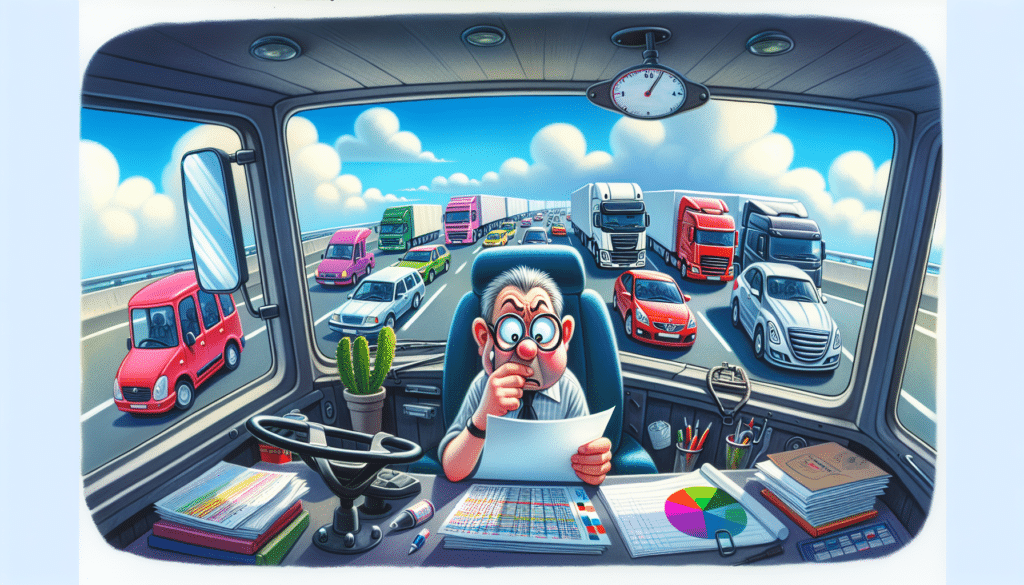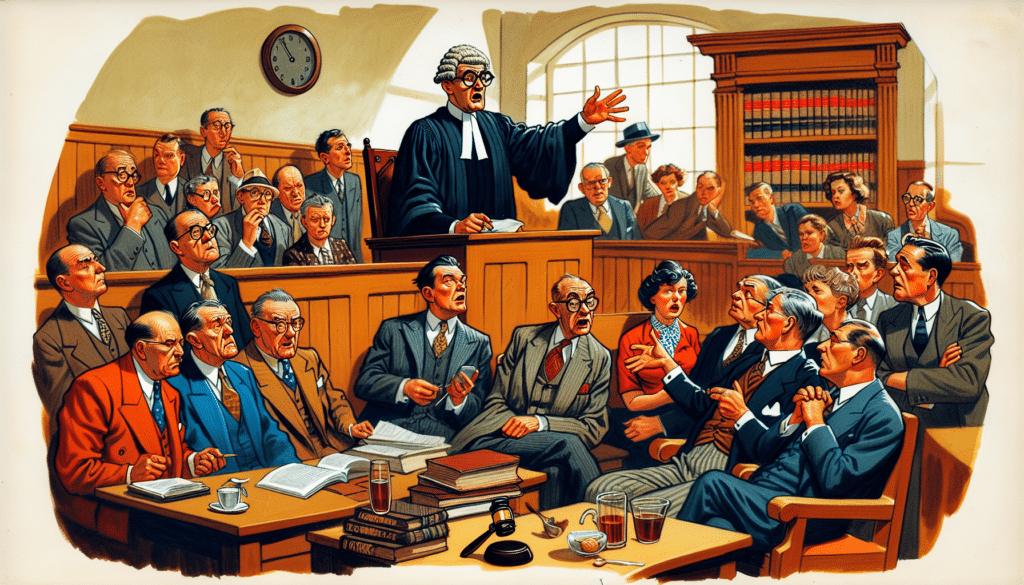Under California Vehicle Code (CVC) 22107, an unsafe lane change CVC happens when a driver changes lanes without signaling or ensuring safety. This article outlines the rules, penalties, and how to contest a ticket.
Key Takeaways
California Vehicle Code 22107 requires drivers to signal lane changes and ensure safety to prevent accidents, with serious consequences for violations.
Violations can lead to fines, points on the driving record, increased insurance premiums, and significant penalties for commercial drivers.
Drivers can contest unsafe lane change tickets through legal representation or attend traffic school to mitigate the impact on their driving record.
California Vehicle Code 22107: The Basics
California Vehicle Code 22107 plays a key role in promoting road safety by mandating that drivers ensure reasonable safety and use appropriate signals before changing lanes. Thoughtlessly switching lanes without considering surrounding traffic can lead to significant consequences.
Drivers must signal their intention to change lanes, either with a turn signal or a hand signal. This communication helps prevent accidents by informing other drivers of your actions. Picture driving on a busy freeway and a vehicle in front swerves into your lane without warning—the chaos and collision risk are precisely what this law aims to prevent.
Additionally, California law forbids turning or changing lanes without ensuring it can be done safely. Drivers must check mirrors and blind spots to make sure no other vehicles will be affected. A momentary lapse in judgment or missed blind spot check can lead to severe accidents, potentially resulting in vehicular manslaughter.
Requirements for Safe Lane Changes

Safe lane changes are essential for road safety. California traffic law requires drivers to signal their intent to change lanes at least 100 feet in advance, as per CVC § 22108. This gives other drivers enough warning and time to adjust.
Ensuring sufficient space in the next lane before changing is crucial. Drivers must assess the speed and distance of other vehicles in the target lane. Assuming a small gap is enough can lead to unsafe lane changes and accidents. A lane change is safe only when there is ample space to move without affecting other vehicles.
When changing lanes, slowing down is unnecessary if the lane is clear, avoiding traffic disruptions and maintaining flow. However, drivers must still ensure the lane change is safe.
The key takeaway here is that signaling, spacing, and awareness are the trifecta of a safe lane change.
Consequences of Violating CVC 22107
Violating Vehicle Code 22107 carries serious repercussions, typically including fines ranging from $300 to $400. These fines serve as a deterrent, emphasizing adherence to California vehicle code.
Beyond financial penalties, violators may incur an additional point on their DMV driving record. Accumulating points can attract increased scrutiny from law enforcement and potential license suspensions over time. The long-term impact on their driving record is a significant concern for many.
A CVC 22107 violation can also lead to increased insurance premiums, as insurers view traffic violations as indicators of risky behavior. Even a single ticket can result in higher premiums. For commercial drivers, multiple violations could lead to severe penalties, including suspension or revocation of their commercial driver’s license.
Fighting an Unsafe Lane Change Ticket

Receiving an unsafe lane change ticket can be stressful, but options are available. Drivers can contest the ticket by presenting a legal defense in court. One effective method is the Trial By Written Declaration process, which allows contesting the ticket without appearing in court. This is convenient for those with busy schedules or who live far from the courthouse.
Hiring an experienced traffic attorney can significantly increase the chances of successfully contesting an unsafe lane change ticket. An experienced attorney can provide valuable insights and craft a robust defense strategy, particularly crucial for commercial drivers to minimize the repercussions of traffic violations.
If the officer who issued the ticket does not show up in court, the driver may have a higher likelihood of getting the ticket dismissed. However, drivers must pay bail when pleading not guilty to ensure their appearance at trial, committing them to follow through with the legal process.
Impact on Commercial Drivers

For commercial drivers, traffic violations carry higher stakes. A second conviction for an unsafe lane change within three years results in a 60-day driving disqualification, significantly impacting their livelihood.
A CVC 22107 violation counts as 1.5 points against the driving record, carrying serious repercussions for commercial drivers. Federal regulation FMCSA CFR 49 Part 383.51 outlines disqualifications for unsafe driving offenses for commercial license holders, ensuring they maintain high safety standards.
Truck drivers should consider disputing every unsafe lane change incident in traffic court and seek assistance from a traffic attorney. Self-representation can be risky, as commercial drivers may inadvertently admit guilt, leading to severe penalties. Legal representation offers protection and advocacy, significantly impacting the case outcome.
Attending Traffic School

Attending traffic school can mitigate the impact of an unsafe lane change ticket. While not required for violating CVC 22107, attending can help avoid points on a DMV driving record, beneficial for maintaining a clean record and preventing insurance premiums from rising.
However, attending traffic school does not absolve a driver from paying the fine for the violation. The financial penalty remains, but avoiding point accumulation can prevent more severe consequences like a suspended license or increased insurance costs.
Opting to attend traffic school demonstrates a commitment to safe driving and adherence to traffic laws. This proactive step can have long-term benefits for a driver’s record and peace of mind.
Related Traffic Laws
Understanding related traffic laws is vital for comprehensive knowledge of safe driving practices. California Vehicle Code 22107, amended in 1959, mandates signaling when changing lanes to ensure the safety of all road users.
California Vehicle Code 22108 emphasizes the requirement for drivers to signal in the manner provided before turns and lane changes to inform other vehicle operators. Non-compliance can result in penalties, highlighting the importance of adhering to these laws.
These laws collectively aim to reduce the risk of accidents and promote a culture of safety on the roads.
Court Procedures and Obligations
Navigating court procedures and obligations is crucial when contesting a traffic ticket. Failure to appear can result in legal repercussions under Vehicle Code 40508, including a guilty verdict, additional fines, and a potential misdemeanor charge.
Failure to appear in court may lead to a bench warrant for the driver’s arrest, escalating a simple traffic violation into a severe legal issue. Adhering to court procedures and ensuring timely appearances are critical for effectively managing traffic violations.
Implications in Personal Injury Cases

Violations of CVC 22107 can significantly impact personal injury cases. In California, such a violation can lead to a legal presumption of negligence, meaning the driver is automatically considered at fault for the accident. This simplifies proving negligence, a crucial element in personal injury lawsuits.
Drivers violating CVC 22107 may be deemed negligent in personal injury lawsuits if their unsafe lane change contributes to an accident. This can lead to liability in personal injury claims with potential financial repercussions. Proving negligence in such cases often hinges on demonstrating the violation of CVC 22107.
Proving negligence in personal injury lawsuits can be complex, but a CVC 22107 violation simplifies this by establishing a standard of care. This can significantly impact the outcome, making it easier for plaintiffs to secure compensation.
Comparing Laws Across States
California’s traffic laws are stringent, but how do they compare to other states? In Colorado, CRS 42-4-1007 outlines similar regulations to California’s Vehicle Code 22107. Nevada also has statutes related to lane changes that emphasize signaling before making a lane change, aligning with California’s focus on safety and signaling.
Both Colorado and Nevada require drivers to ensure a lane change can be made safely, similar to California’s stipulation. These comparisons highlight that while states may have different codes, the underlying principle of ensuring safety and proper signaling remains consistent.
Summary
Understanding and adhering to California Vehicle Code 22107 is crucial for every driver. This guide has covered the basics of the code, the requirements for safe lane changes, the consequences of violations, and the steps to contest a ticket. For commercial drivers, the stakes are even higher, and attending traffic school can be a beneficial option to mitigate penalties.
Always remember, safe driving practices not only keep you out of legal trouble but also ensure the safety of everyone on the road. Let’s commit to being responsible drivers and making our roads safer for all.
Frequently Asked Questions
What is California Vehicle Code 22107?
California Vehicle Code 22107 requires drivers to ensure safety and use appropriate signals before changing lanes, including checking mirrors and blind spots. It’s essential for maintaining safety on the road.
What are the penalties for violating CVC 22107?
Violating CVC 22107 typically results in fines between $300 and $400, an additional point on your DMV driving record, and potentially higher insurance premiums. It’s crucial to be aware of these consequences to avoid added costs and complications.
Can I fight an unsafe lane change ticket?
You can fight an unsafe lane change ticket by contesting it in court, utilizing the Trial By Written Declaration process, or hiring a traffic attorney for legal representation. Taking these steps can help you present your case effectively.
How does a CVC 22107 violation affect commercial drivers?
A CVC 22107 violation affects commercial drivers by adding 1.5 points to their driving record, which can result in significant penalties, including potential disqualification from driving after multiple violations within three years.
What are the benefits of attending traffic school after receiving a ticket?
Attending traffic school can prevent points from being added to your DMV record, thus helping you avoid increased insurance premiums and other long-term repercussions. This option is beneficial for maintaining a clean driving record.




